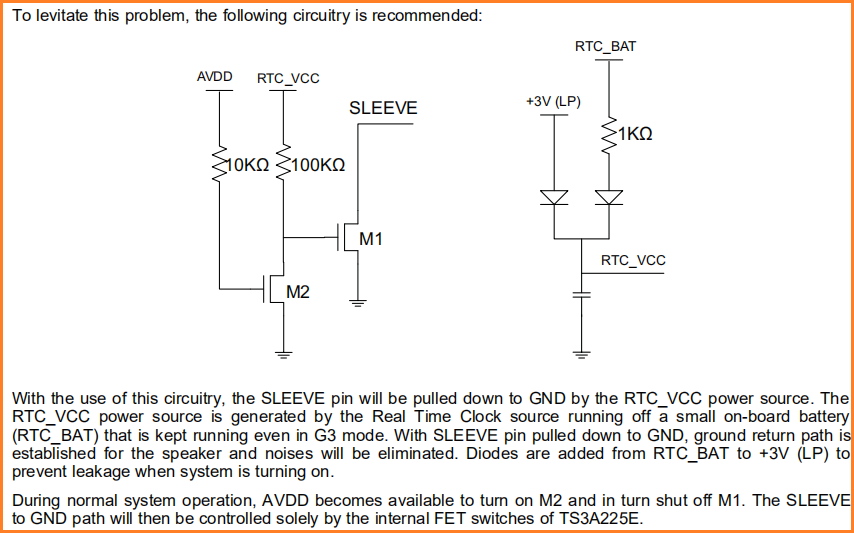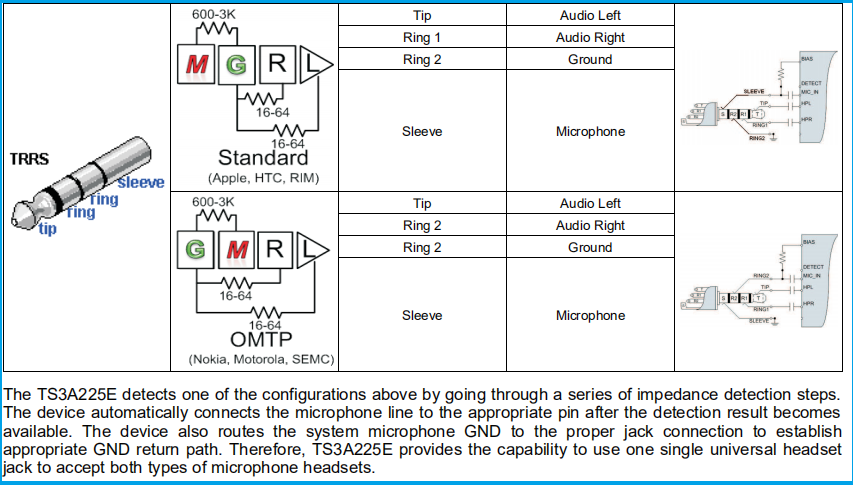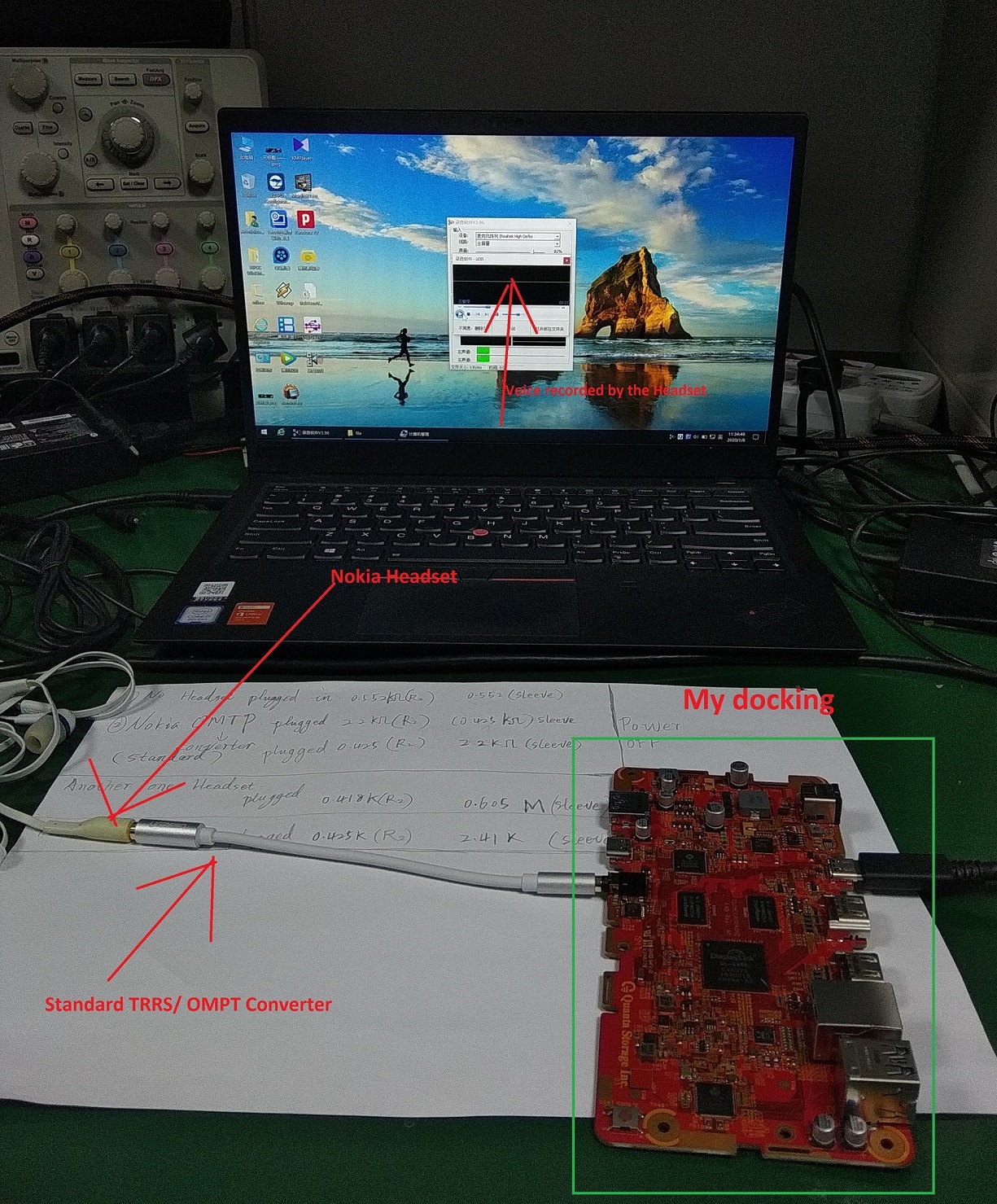Other Parts Discussed in Thread: TS3A227E
Dear TI fellow
1, My design is a sort of docking, which device does not support ACPI, so there is no RTC_Bat in my system. (no any other power after shut down). And then the Noise is coming running off the speaker.
2, Could I connect the 'SLEEVE' to GND directly? Why not?
3, In fact, I did connect the 'SLEEVE' to GND directly. What made I confused is that there is nothing serious happened during the testing of two sorts of headsets ( both standard and OMPT, both listening and recording through the Microphone)
4, I want to know why both kinds of headset could work correctly (at least without any noticeable malfunction)
5, If the 'SLEEVE' could be connected to GND directly, why did the datasheet advise the user to add the circuit below, instead of telling us to connect the SLEEVE to GND directly?






